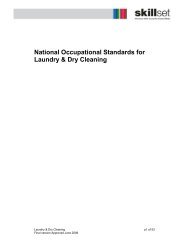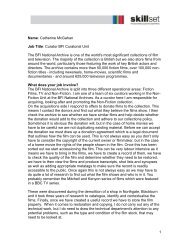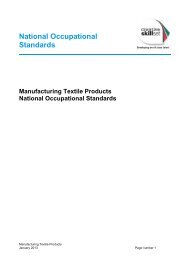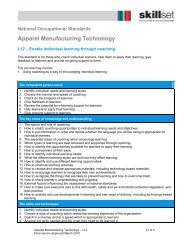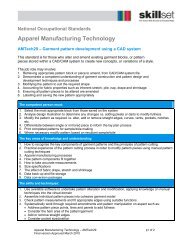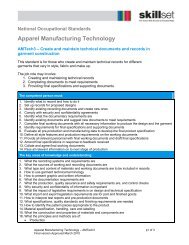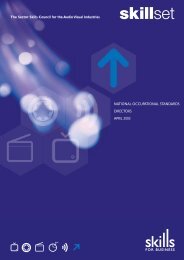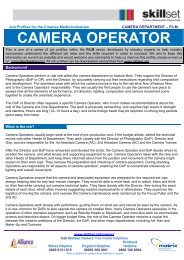Publishing in the Knowledge Economy - DTI Home Page
Publishing in the Knowledge Economy - DTI Home Page
Publishing in the Knowledge Economy - DTI Home Page
Create successful ePaper yourself
Turn your PDF publications into a flip-book with our unique Google optimized e-Paper software.
<strong>Publish<strong>in</strong>g</strong> <strong>in</strong> <strong>the</strong> knowledge economy<br />
The <strong>in</strong>dustry today<br />
13.5 Newspapers<br />
Strengths<br />
• Strong brands<br />
• High reach<br />
• Authoritative content (qualities)<br />
• Established distribution channels<br />
• No tax on <strong>in</strong>formation and knowledge <strong>in</strong> pr<strong>in</strong>t<br />
• Strong newstrade distribution reduces costs of<br />
reach<strong>in</strong>g customers (compared with overseas<br />
counterparts)<br />
• Relationships with advertisers<br />
• Trust (regional and local)<br />
• Role of papers with<strong>in</strong> economy and society<br />
well established and understood<br />
• National daily papers are ma<strong>in</strong>ly <strong>in</strong>sulated<br />
from <strong>in</strong>ternational competition<br />
• Many local papers do not compete directly<br />
with o<strong>the</strong>rs <strong>in</strong> same market<br />
• Ad sales force has unparalleled local<br />
relationships with bus<strong>in</strong>esses<br />
• Portability<br />
• Competitive price<br />
• Low staff turnover<br />
Constra<strong>in</strong>ts and weaknesses<br />
• Mature market<br />
• Decl<strong>in</strong><strong>in</strong>g circulation<br />
• Special competition regime on mergers and<br />
acquisitions limits ability to respond quickly to<br />
deal opportunities<br />
• Cross media ownership constra<strong>in</strong>ts limits scale<br />
and cross-platform exploitation of assets<br />
compared with books and magaz<strong>in</strong>es<br />
• High cost of production and distribution for<br />
physical product<br />
• EU employment and work<strong>in</strong>g time regulations<br />
make it more difficult to recruit and reta<strong>in</strong><br />
delivery workers<br />
• Greater reliance on advertis<strong>in</strong>g than a decade<br />
ago, especially recruitment advertis<strong>in</strong>g<br />
Threats<br />
• Newspaper read<strong>in</strong>g habit dy<strong>in</strong>g out <strong>in</strong> younger<br />
generations<br />
• Grow<strong>in</strong>g competition for readers’ attention<br />
• Grow<strong>in</strong>g competition for advertis<strong>in</strong>g<br />
• Classified advertis<strong>in</strong>g may migrate to Internet<br />
rivals or be dis<strong>in</strong>termediated i.e. advertisers<br />
separately or <strong>in</strong> groups reach customers<br />
directly via onl<strong>in</strong>e or o<strong>the</strong>r <strong>in</strong>teractive media<br />
• Inequitable taxation of electronic <strong>in</strong>formation<br />
• Public sector recruitment direct via Internet<br />
• Onl<strong>in</strong>e media br<strong>in</strong>gs o<strong>the</strong>r sources of news to<br />
consumers<br />
• News becom<strong>in</strong>g a commodity<br />
• Advertisers may cont<strong>in</strong>ue to shift budgets<br />
towards below <strong>the</strong> l<strong>in</strong>e campaigns<br />
• Privacy laws could beg<strong>in</strong> to follow European<br />
model<br />
• Paper prices may rise faster than ability to<br />
raise cover prices<br />
• Price wars could recur<br />
• Decl<strong>in</strong>e <strong>in</strong> CTNs threatens home delivery and<br />
frequency of purchase<br />
• Advertis<strong>in</strong>g restrictions could <strong>in</strong>crease<br />
Opportunities<br />
• Fur<strong>the</strong>r consolidation<br />
• Pr<strong>in</strong>t format changes, partly enabled by digital<br />
pr<strong>in</strong>t<strong>in</strong>g (more colour, more supplements,<br />
regionalisation and special editions) to drive<br />
advertis<strong>in</strong>g and purchase frequency<br />
• Use of e-bus<strong>in</strong>ess technologies <strong>in</strong>creases<br />
ability to realise economies of scale (local<br />
papers shar<strong>in</strong>g content)<br />
• Use of e-bus<strong>in</strong>ess technologies <strong>in</strong>creases<br />
ability to reuse editorial content across<br />
different platforms<br />
• Use of e-bus<strong>in</strong>ess technologies allows papers<br />
to make maximum use of <strong>the</strong>ir advertis<strong>in</strong>g<br />
content and data about advertisers and<br />
customers<br />
78



